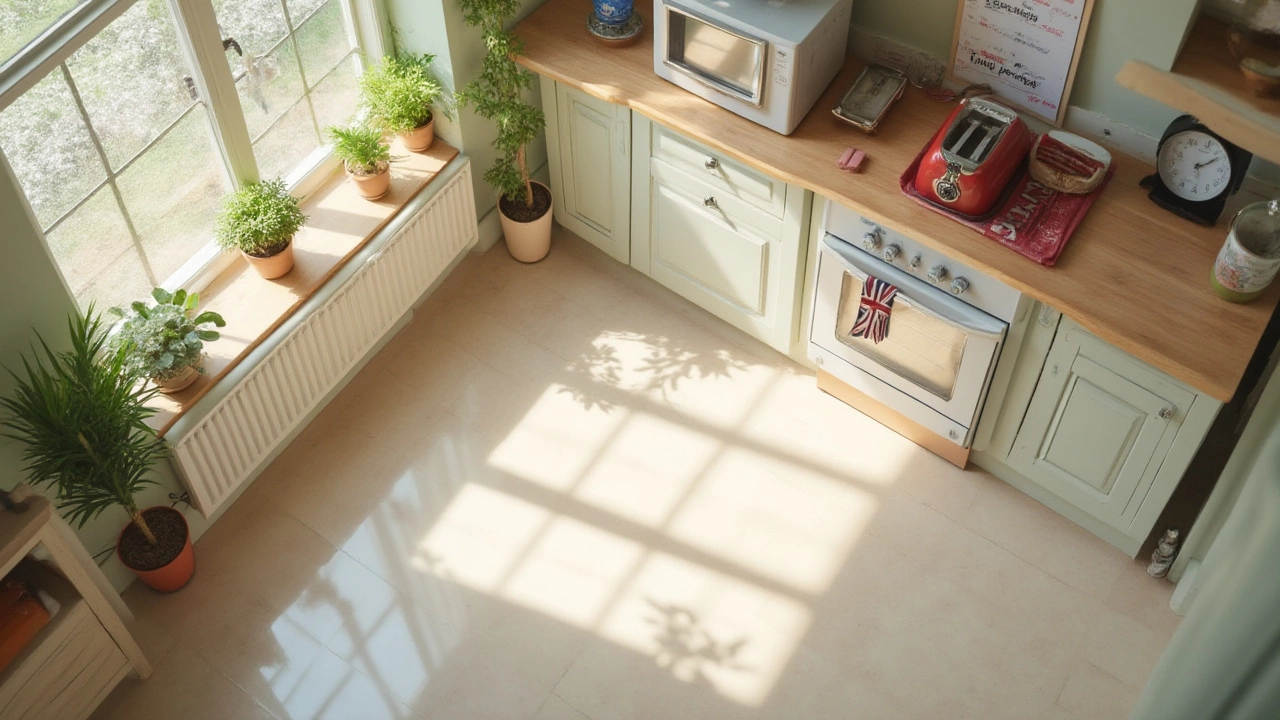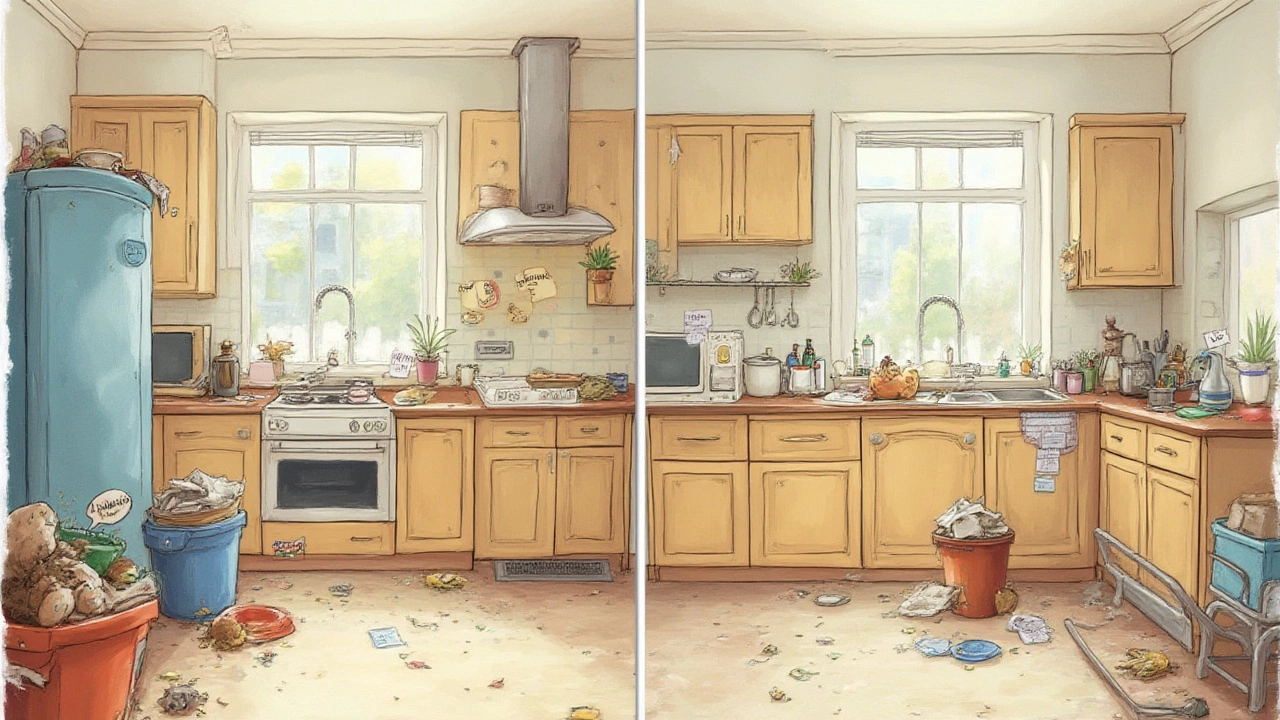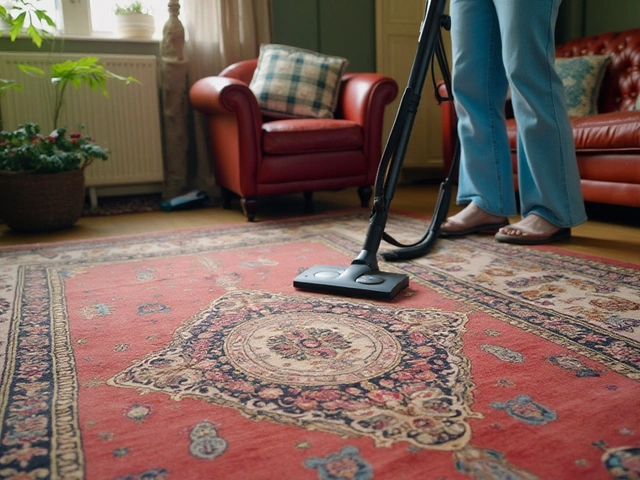Ever realized you’re scrubbing your kitchen at midnight, wondering if something’s wrong with your time management—or the amount of grime hiding under your toaster? You’re not alone. People tend to wildly underestimate how long a real deep kitchen clean takes. It’s never just a quick wipe or a speedy mop. Once you start pulling out the fridge or emptying that mysterious cutlery drawer, time slips right through your rubber-gloved hands.
What Counts as a Deep Clean (and Why Should You Care)?
Let’s be clear: a deep clean is way beyond your daily wipe-down and sink scrub. We’re talking about moving appliances, emptying cabinets, checking expiry dates in your pantry, and leaving no greasy tile untouched. Deep cleaning tackles what ordinary cleaning skips: hidden crumbs, grease splatters behind the stove, and that weird sticky spot under the dish rack. And it matters. Studies from the National Sanitation Foundation show that kitchen sinks and counters are among the germiest spots at home, often dirtier than your trash can. Cutting down bacteria and buildup doesn’t just look good; it makes you and your family safer. Plus, deep-cleaned kitchens make cooking feel less like a chore and more like something out of a TV show.
Knowing what counts means you won’t miss a spot. A typical deep clean includes:
- All exterior and interior surfaces: cabinets, drawers, countertops, and backsplash
- Appliance exteriors and interiors: Fridge, freezer, oven, microwave, and dishwasher
- Sink, faucet, drains, and garbage disposal
- Floors: sweep, mop, and grout, especially behind and beneath appliances
- Lighting fixtures, switches, handles, and small appliances
Breaking Down the Deep Clean: Task-by-Task Timing
So, how long should a deep kitchen clean actually take? Nobody wants to spend all day on their knees with a sponge. But here’s the truth: it’s going to run longer than an episode of your favorite show. If you go all-in, expect anywhere from 3 to 6 hours for a typical home kitchen, depending on the level of chaos, stubbornness of stains, and how often you do this. Here’s how it tends to break down for most people:
| Deep Clean Task | Estimated Time (minutes) |
|---|---|
| Empty fridge/freezer, clean, and restock | 45-60 |
| Scrub stovetop and oven | 45 |
| Cabinets, drawers, and handles (interior + exterior) | 30-45 |
| Sink, drains, faucet, and garbage disposal | 20 |
| Countertops, backsplash (degreasing and sanitizing) | 20-30 |
| Microwave inside and out | 10-15 |
| Dishwasher cleaning cycle + wipe-down | 10 |
| Floors (sweep, mop, edges, behind appliances) | 25-40 |
| Lighting fixtures, switches, vents | 15 |
| Small appliances (toaster, blender, coffee maker) | 15 |
Now, if you add up all those numbers, that’s about 3.5–5 hours. If you have a huge kitchen or lots of clutter, count on at least an hour more. Skip a few areas and you’ll save time, but if you don’t do the fridge or oven, did you really even deep clean?

Why Your Kitchen Might Need More (or Less) Time
Let’s talk variables. No two kitchens are the same, and neither are two cleaning sessions. Some people deep clean monthly, so there’s less gunk to battle. Others leave it until dust bunnies take over. High-traffic family kitchens, party central kitchens—they take longer. Do you have a pet? Fur and dander can settle absolutely everywhere, adding to your workload. Apartment kitchens might be tiny, but a lack of space means nowhere to shift stuff, which can slow you down.
Tools matter too: a good scrub brush, reliable degreaser, and a high-suction vacuum make things faster. If you try to deep clean with just a paper towel and kitchen spray, you’ll be at it until Thursday. And don’t skip music or a podcast—a 2024 study from the UK’s National Trust found people clean 30% faster when listening to music they like. Bad news for people who deep clean in total silence.
Your skill level and cleaning style make a difference. If you’re methodical and focused, you’ll work quicker than someone constantly stopping to check their phone or get distracted (guilty!). If you want to clean like a pro, pick a task, finish it completely, then move to the next.
Pro Tips for a Faster, Smarter Deep Clean
There’s no secret hack that turns a deep clean into a quick job, but there are ways to keep it from eating your whole weekend. Here’s what helps:
- Declutter first. Get rid of everything that doesn’t belong in the kitchen. Less stuff = less to clean.
- Work top to bottom. Start with the lights and shelves so you don’t dirty your freshly mopped floor later.
- Let products sit. Spray degreaser and let it work while you tackle another area—it saves major scrubbing time.
- Empty and soak. Soak oven racks or filters early, so by the time you finish everything else they’re a breeze to clean.
- Have clear zones. Tackle one small area at a time instead of bouncing everywhere. It’s more motivating because you see progress.
- Set a timer. Challenge yourself: Can you beat your last cleaning time for wiping cabinets?
- Don’t ignore details. Handles, light switches, and knobs are germ magnets. Microfiber cloths work best because they trap way more dirt than standard rags.
- If you have help, divide and conquer. One person on appliances, another on floors and surfaces.
- Prep a cleaning caddy. Fill it with all the supplies you’ll need, so you’re not running around the house searching for tools.
- Use natural DIY cleaning mixes (baking soda + vinegar for stink, lemon for shine) if you prefer to avoid heavy chemicals.
If you keep up with regular spot cleaning, deep cleans get a lot less scary. But even if your default mode is to let things pile up, it’s better to go all-out once every few months than never at all.

Your Deep Clean Kitchen Timeline: The Realistic Picture
So what’s the sweet spot? Most pros and cleaning experts agree—plan for about 4 hours per average kitchen if you want everything truly spotless. Some commercial cleaning companies promise unrealistically short times, but those often cut corners. Or, they’ve got a whole team zooming through, which most of us do not. DIY, solo, and aiming for excellence? Block out a solid half day and you’ll finish with a kitchen that’s actually worth showing off.
If you find yourself losing motivation halfway through, focus on the high-impact spots. Appliance interiors, sink, and floors always pack the most punch and contribute to kitchen hygiene. Just don’t put off the oven or fridge until next time every time—they’re often the grossest and most rewarding to tackle.
One surprising fact: Deep-cleaning your fridge and pantry could save you money—UK food waste watchdog Wrap reports that people throw away an average of £60 of food a month simply because things get lost or forgotten at the back. Making a cleaning day a pantry audit day puts cash back in your pocket (and maybe reveals snacks you forgot you had).
So, next time deep cleaning the kitchen lands on your to-do list, you’ll know: give yourself at least half a day. Set the soundtrack, fill up the spray bottles, and when you’re done, kick back with a smug sense of satisfaction. Cooking in a deep-cleaned kitchen really does hit different.





